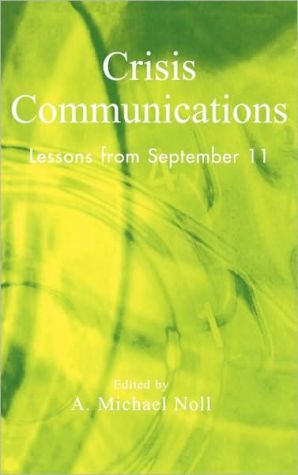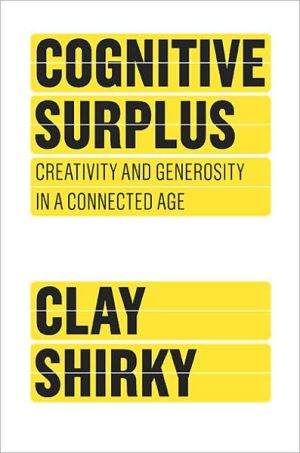Crisis Communications
On September 11, 2001, AT&T's traffic was 40 percent greater than its previous busiest day. Wireless calls were made from the besieged airplanes and buildings, with the human voice having a calming influence. E-mail was used to overcome distance and time zones. And storytelling played an important role both in conveying information and in coping with the disaster. Building on such events and lessons, Crisis Communications features an international cast of top contributors exploring...
Search in google:
Building on the events and lessons of September 11, Crisis Communications features an international cast of top contributors exploring emergency communications during crisis. Together, they evaluate the use, performance, and effects of traditional mass media (radio, TV, print), newer media (Internet, email), conventional telecommunications (telephones, cell phones), and interpersonal communication in emergency situations. They establish how people learned of the September 11 tragedy and how they responded; examine the effects of media globalization on terrorism; and, in many cases, give specific advice for the future.
List of IllustrationsPrefaceIntroduction: A Global Tragedy1The Functions and Uses of Media during the September 11 Crisis and Its Aftermath12Diffusion of News of the September 11 Terrorist Attacks173Civic Actions after September 11: A Communication Infrastructure Perspective314Communication during the World Trade Center Disaster: Causes of Failure, Lessons, Recommendations455Response, Restoration, and Recovery: September 11 and New York City's Digital Networks556The Social Dynamics of Wireless on September 11: Reconfiguring Access697The Telephone as a Medium of Faith, Hope, Terror, and Redemption: America, September 11838A Content Analysis of American Network Newscasts before 9/11999Something's Happened: Fictional Media as a Recovery Mechanism11310September 11 in Germany and the United States: Reporting, Reception, and Interpretation12511The Internet as a News Medium for the Crisis News of Terrorist Attacks in the United States13312The Internet and the Demand for News: Macro- and Microevidence14913History and September 11: A Comparison of Online and Network TV Discourses16714From Disaster Marathon to Media Event: Live Television's Performance on September 11, 2001 and September 11, 200218515Globalization Isn't New, and Antiglobalization Isn't Either: September 11 and the History of Nations19916Is There a bin Laden in the Audience? Considering the Events of September 11 as a Possible Boomerang Effect of the Globalization of U.S. Mass Communication205Epilogue: "The Bell Rang and We Answered"213Index221About the Contributors225
\ Journalism and Mass Communication QuarterlyThe book provides an unusual and compelling look at communication in a time of national crisis. Given its diverse chapters and unique approach, it should be of great interest to a variety of communication scholars and would fit nicely into a number of undergraduate and graduate courses that examine communication processes and effects within mediated, organization, and interpersonal contexts.\ \ \ \ \ ChoiceThis is a very useful scholarly assessment of communication during a crisis. Recommended.\ \








